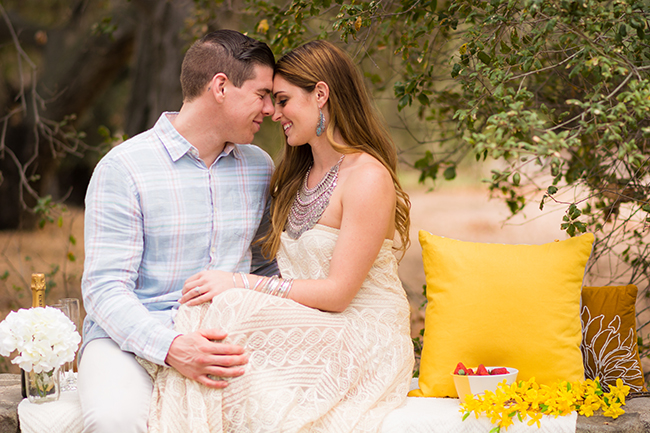Using Cropping for Interest
Although cropping is often used to correct for compositional errors like tilted horizon line or to crop out distracting objects along the edge of the photo, it can also be used to add a creative compositional look to your image. Let’s take a look at how cropping, framing, and using a custom aspect ratio such as a 2:1 aspect ratio can make a stronger impact to an image that is compositionally uninteresting.
Before

After

The composition in the original image is an example of what many beginners tend to do, which is to place the subject right in the center of the image. Although this “bull-eye” composition may work with images that have strong symmetry, it does not work with this particular image.
Placing the subject off-center using the Rule of Thirds helps to add interest by emphasizing the balance with the negative space of the foreground element. The 2:1 aspect ratio also creates a better panoramic look that will make a great print for our client.
The out-of-focus foreground bushes also create interest to the image by framing the couple and guiding the viewer’s eyes to the couple. By using Post-Crop Vignetting, we can further direct the eye towards the brightest part of the image, which is the subject.
Using Cropping to Tell A Story
Cropping helps us to decide what story to tell in the image by dictating what is included and what is excluded. The difference between composition and cropping, however, is that cropping is more focused on the overall story and theme and allows us to focus in on more specific details of the story.

For example, we created a cute picnic scene with a couple shown in the image above. However, if I had just taken wide shots, capturing only the wider context of the scene, then you lose focus on the overall details of the story.


I love the strawberries in the picnic scene, and I think that their feet dangling off the wall looks cute. The power of cropping lies in capturing the details of an overall scene which contribute to the over-arching theme of the shoot. So I focus in on some detailed shots of the overarching scene and utilize the power of cropping to tell a great story.
Conclusion
In the end, what we produce is a collection of pictures that highlights different components of an entire story, resulting in a stronger and more elegant product.
Related Articles to Cropping Definition

What Camera Should I get? | How Many Megapixels Do I Need?

5 Common Mistakes in Editing Landscape Photography









